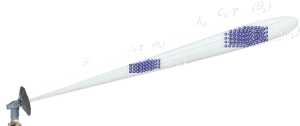Radar Range Equation for Weather Radar
Weather radar systems use many equivalent principles to primary radar. The discussion in this module assumes some knowledge of the principles of primary radar. The presentation of the radar equation in this section requires knowledge of the derivation of the radar equation in the section “Radar Basics”. Here to commemorate the equation in the form that we consider the received power as a function of all other influences:
![]()
 mit
mit
Pe = received power
Ps = transmitted power
G = antenna gain
σ = radar cross-section
λ = t6ransmitters wave length
R = range(1)
The considerably difference between the echoing area σ of an aircraft or other flying „machine” is, weather is normally much larger and more fluid. In the case of rain, the size of a rain drop is wery much smaller than the radar wavelength and therefore the Rayleigh backscatter equation gives the echoing area of a raindrop
![]()
 ;
;
![]()
 mit
mit
D = rain drop diameter
ε = dielectric constant.(2)
For radar bands L to X water has |K |2= 0.93 and for ice |K |2= 0.2
If we sum all the echoing areas contained in 1 m3 we get

where Z is the radar reflectivity and η is the radar reflectivity per unit volume.
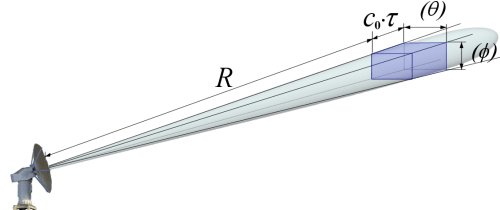
Figure 1: The volume of the resolution cell
When the rain fills the beam, than the volume sample in one range cell is:
![]()
 mit
mit
φ = vertical beamwidth of antennas pattern
θ = vertical beamwidth
R = range to radar
c0 = speed of light
τ = transmitters pulse width.(4)
The basic weather radar equation (see module “radar basics”) can be written:
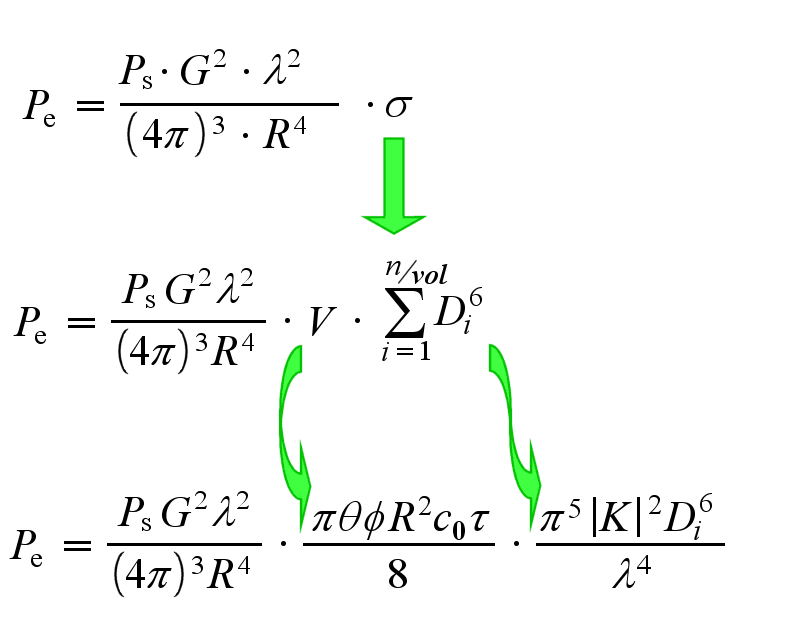
 (5)
(5)
The effects of the reflectivity can be seen when looking at a weather pattern with radar. At high altitudes the reflectivity from snow is low. At lower levels, when the snow starts to melt, the snow flakes become coated with water and dramatically increase the radar returns.
Finally the snow flakes melt completely and coalesce into raindrops which are smaller than the snowflakes and fall faster, giving a reduced radar echo. This effect causes the "bright band" on the radar display.
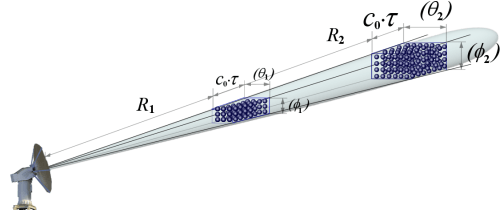
Figure 1: The volume of the resolution cell depends on the range
This difference in the principle of the Radar Range Equation when it is applied
to Weather Radar systems is identified.
This form is still completely unsuitable for meteorological radar applications. It isn't looked at here
from the view of a meteorologist, special from the view of radar unit mechanic either.
If this equation is rearranged again that it can be used to the computing of the range,
one then recognizes that the familiar fourth root will be replaced by a square root.
But why?
The raindrop-filled volume blows up proportionally of the square of the distance! Very much more reflective raindrops fit in the volume at same density. And so very much more energy is reflected as if it is filled with a single aircraft only.
But that equation is now used in weather radar applications?
Let us recall the basic statement: The weather radar measures the magnitude of the echo signal. The echo signal should therefore be a function of the nature, size and number of weather objects per unit volume. The individual parameters of the radar set should be summarized as a constant k, because these parameters should not vary during the weather observation:
![]()
 mit
mit
Pe = received power
Ps = transmitted power
k = constant factor that describes the individual radar set
λ = transmitters wave length
ε = value for the physical properties of the reflecting objects
N = number of precipitation / cloud particles
D = diameterr of precipitation / cloud particles (6)
The value of ε depends on the physical properties of the reflecting objects (precipitation or cloud particles). It can take values of about 0.208 for ice and snow, to about 0.93 for raindrops.
The big problem for a weather radar is that in this equation are three unknown variables (ε, N, D) which must be determined by the software of the radar. In addition, mixed forms of precipitation are possible. The value for ε can vary very much therefore.


